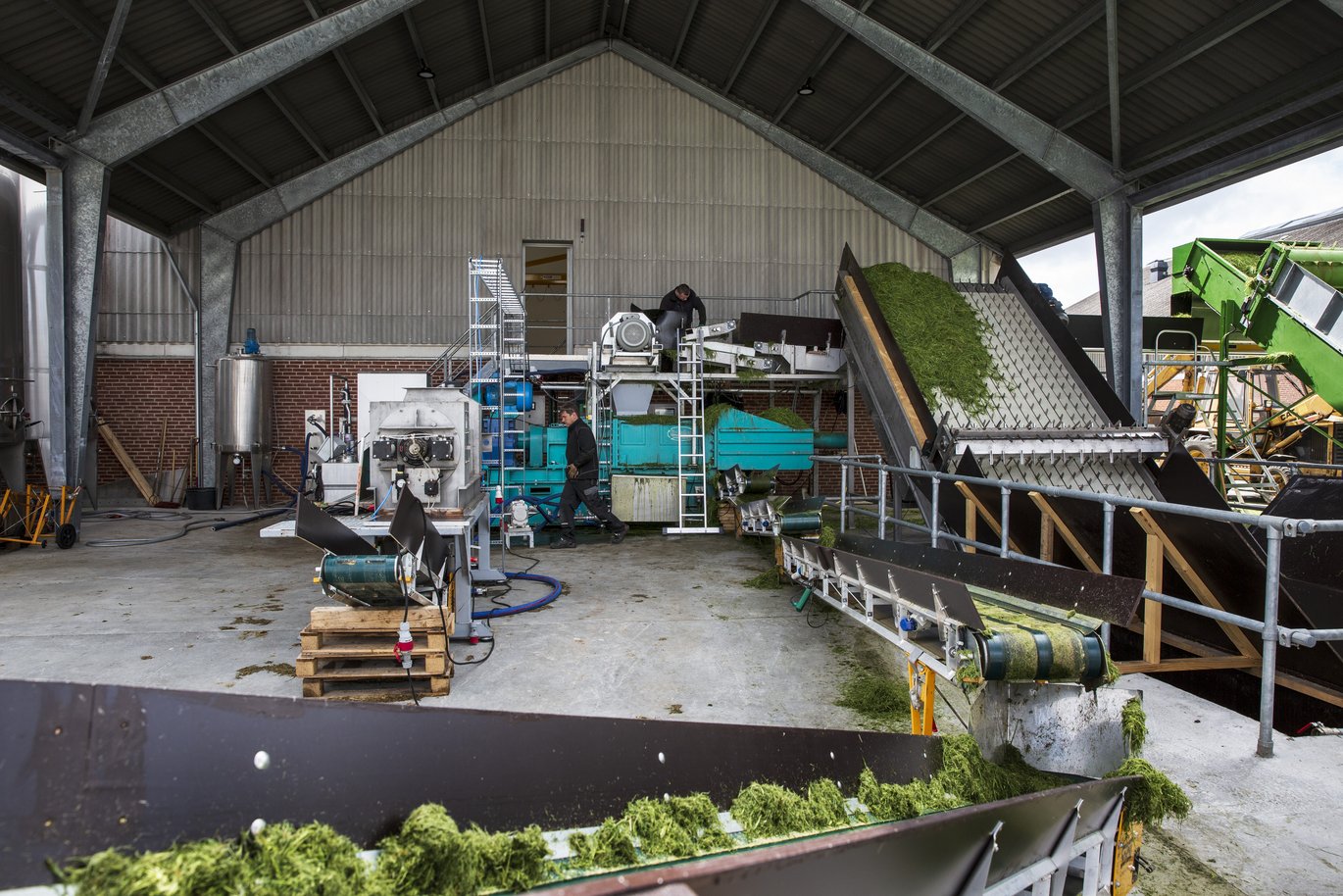Legumes are beneficial for green biorefining
New research suggests that crops have different potential for protein extraction in biorefining.

New sustainable protein sources with low environmental impact are needed, if we are to meet environmental and climate concerns in food supply. Therefore, researchers from the Department of Agroecology have studied two nitrogen-fertilized grasses and three legumes in an attempt to find the most optimal green biomass for protein extraction.
"We have previously developed a method to assess the potential to squeeze protein out of green crops. This method has enabled us to find the protein potential of a crop in the future without it having to go through the biorefinery," says postdoc Henrik Thers from the Department of Agroecology.
Now the researchers have used the method to assess the potential of five different crops:
- White clover
- Red clover
- Alfalfa
- Lucerne Rye grass
- Beach fescue
Where the three legumes are unfertilised, the grasses are fertilised with three levels of fertiliser.
Lucerne and red clover provide the most protein
"We've measured yields for two years and when you look at yields alone, the grasses are hard to beat, but we've also looked at crude protein content and there the content per dry matter is slightly higher in the legumes. This means that when you look at the protein content per hectare, it is actually a tie between the grasses and the legumes," says Henrik Thers.
The only exception is white clover, which can't keep up with the either of other plants. Over the two years, red clover has a rather fluctuating result, while alfalfa is stable on the same level as the most fertilised grasses when looking at crude protein.
But there is a difference in how the protein is bound in the plants. Therefore, the researchers used the CNCPS method to investigate how much protein could be extracted once in a biorefinery. It turns out that there is a difference between grasses and legumes in particular, with a higher proportion of the protein in legumes having the potential to be extracted in the biorefinery.
"Then alfalfa and red clover are then suddenly above the grasses. That's an important message, I think, because there are already commercial biorefineries in Denmark, and based on these results they will get more out of including legumes or mixtures of grass and legumes in their green biomass than grass alone. So, there is a potential production gain by including legumes," says Henrik Thers.
More benefits from legumes
"There is an important point in relation to alfalfa and the other legumes. That is that by not having to fertilise them with nitrogen, we probably save a lot of nitrous oxide, and we certainly save the climate impact of having to produce the fertilisers. So, from a climate and environmental perspective, we have to assume that the outcome is more positive with the legumes," says Henrik Thers.
On the other hand, when more of the total protein in a crop is extracted for the concentrate in the biorefinery, there will be less left in the residue - the pulp. It is often intended as feed for cattle, and so the feed value of the pulp will be slightly lower, according to the researchers.
More information | |
| We strive to ensure that all our articles live up to the Danish universities' principles for good research communication (scroll down to find the English version on the web-site). Because of this the article will be supplemented with the following information: | |
| Collaborators | Department of Agroecology at Aarhus University |
| Funding | The research is part of a project called "Biobase Green Protein, which is funded by Aarhus University, the Ministry of Food, Agriculture and Fisheries and the Green Development and Demonstration Programme (GUDP) project "Multiplant" (grant number 34009-0678). The project is coordinated by the International Centre for Research in Organic Food Systems (ICROFS) |
| Conflict of interest | None |
| Read more | The publication "Annual protein yield and extractable protein potentials in three legumes and two grasses" is published in the Journal of the Science of Food and Agriculture. It is written by Henrik Thers and Jørgen Eriksen |
| Contact | Postdoc Henrik Thers, Department of Agroecology, Aarhus University. Tel: +4593522516 or mail: thers@agro.au.dk |
